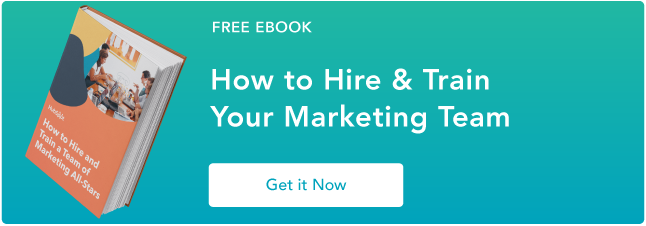Diversity, inclusion, and belonging are major points of growth for most businesses right now, and for good reason -- diverse teams can help companies increase revenue by 19% and enable companies to outperform industry norms by 35%.
In the tech industry, we're seeing a particularly strong focus on diversity and inclusion, particularly since both women and people of color are largely underrepresented in the tech space.
However, making a meaningful impact isn't easy -- it requires taking a microscope to a business's embedded culture and structure and being open to some major changes.
As recruiters at HubSpot, we tend to be on the "front line" for bringing in remarkable talent. So, in 2019, we knew we needed to step up our game when it came to ensuring our recruitment process was fair, consistent, and inclusive of a truly diverse candidate pool.
If you're a recruiter, you know that recruiting is both art and science. So enabling our teams through technology to decrease the opportunity for bias was critical for creating scalable solutions.
Ultimately, we needed to incorporate scientific guardrails to help our recruiters, hiring managers, and interviewers decrease mental shortcuts -- while still innovating and excelling in what they do best. No small task, right?
That's where Greenhouse Inclusion and HubSpot meet.
Why choose a pilot program?
HubSpot is one of the first companies to pilot the new Greenhouse Inclusion technology. The platform allows us to reduce mental shortcuts, mitigate bias, identify problem areas, and measure success -- all big changes. But the prospect of implementing thought-process change across our entire global organization was beyond daunting.
Ultimately, to reduce risk, we decided to initially run two pilot programs for specific departments so we could refine the process before sharing it with everyone at HubSpot. We needed a few test cases to help uncover flaws, get stakeholder buy-ins, and evaluate if using the tool was the right decision for the team.
How We Ran Our Pilot Program
This was an exciting time to get some of our teammates into the sandbox to play around with the new process and technology. However, we recognized early that setting some clear expectations and goals was critical to ensure we stuck to a timeline and didn't disrupt too many of our day-to-day operations.
When meeting with the pilot teams, we were open, honest and transparent on what we predicted could be road bumps and difficult muscles to stretch in implementing a new process to their hiring teams. First, we explained this was going to be time-consuming and could take multiple meetings with stakeholders to get off the ground.
Additionally, we told these pilot teams that the value these changes could bring wouldn't be immediately visible, but would ultimately impact our hiring processes long-term. We wanted teams to go in with eyes wide open.
We also wanted to remain transparent about the inner-workings of the process with HubSpot employees. Since we want to use Greenhouse Inclusion as a global tool in the near future, it was imperative we socialize the technology with the non-pilot teams early.
To do this, we embarked on a marketing roadshow and shared the "coming attractions" with business leaders, interview teams, front-line teams, and our employee resource groups. We decided it was imperative to start sharing the 'why' behind this technology early to help grease the wheels for future roll-outs.
Three Things We Learned
1. Sharing the "why" with your team is critical.
Ultimately, the Greenhouse tool is good leverage, but the learning curve extends beyond just showing users how to build scorecards in Greenhouse.
When implementing change with a new piece of technology for a recruitment team, sharing the 'why' behind your method is really important.
Both interviewers and our recruitment team yearned for additional conversations on the root cause of biases, how they could personally work to mitigate them in their day-to-day, and how they could track whether the tool was working.
2. Put your pilot teams in the driver's seat.
We purposefully avoided being overly prescriptive on the step-by-step formula for using some of the structure scorecard tools. By sharing the 'why' (as mentioned above), we gave our pilot teams the destination while depending on them to build the best path there.
We found we got much better output when the pilot groups got their hands dirty and tried things first. This helped us build out training materials for the global launch.
3. Be diligent about quality assurance.
It's understandable and easy for users to lean back onto muscle memory when launching into a new tool. We could have been better about reviewing scorecards immediately, and course-correcting any errors quickly. This would have allowed us to catch confusion with the tool early, before it snowballed.
Ultimately, we realized we needed to be more diligent about holding ourselves accountable to the new process, and ensuring data integrity.
Whether or not you choose to implement bias-mitigating technology at your own company, it's critical you dedicate time and resources to train your interviewers to be more thoughtful about the role they play in driving an effective and empathetic hiring process for candidates. This will help your company build a stronger employer brand, and attract better talent down the road.
If you're not a part of your company's recruitment team, take a look at 53 Little Things You Can Do to Impact Diversity at Your Company for other ways you can help.


No comments:
Post a Comment